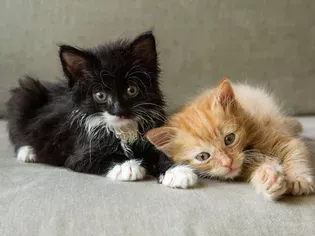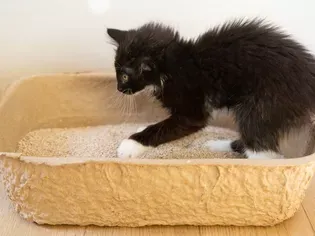9 Spring Pet Safety Tips
Updated on 05/27/24

9 Spring Pet Safety Tips to Keep Your Furry Friend Hopping for Joy This Season
Spring is in full bloom, bringing with it warmer temperatures, blooming flowers, and an abundance of new life. While this time of year is an exciting one for both humans and pets alike, it's important to be aware of the potential hazards that springtime poses for our furry companions.
From toxic plants to pests and parasites, spring presents a unique set of challenges to pet owners. By following these nine essential safety tips, you can ensure that your beloved pet enjoys the season to the fullest, without any mishaps.
1. Beware of Toxic Plants
Spring is the time when many plants begin to bloom, but not all of them are safe for pets. Some common spring plants that can be toxic to animals include:
* Tulips
* Daffodils
* Hyacinths
* Crocuses
* Lily of the valley
* Azaleas
* Rhododendrons
If you're planning on planting any new flowers this spring, be sure to research which ones are safe for pets before you do. And if you have any existing plants that you're not sure about, it's best to err on the side of caution and keep them out of reach of your pet.
2. Watch Out for Pests and Parasites
Spring is also a time when pests and parasites become more active. These pests can not only be a nuisance to your pet, but they can also transmit diseases. Some common spring pests and parasites to watch out for include:
* Fleas
* Ticks
* Mosquitoes
* Heartworms
To protect your pet from these pests, it's important to keep them on a regular flea and tick prevention program. You should also avoid letting your pet drink from stagnant water, as this can increase their risk of contracting heartworms.
3. Be Careful Around Water
Spring is a time of year when many bodies of water, such as lakes, rivers, and ponds, are at their highest levels. While it's tempting to let your pet swim and play in these bodies of water, it's important to be aware of the dangers.
* Cold water: Spring water can be very cold, and even a short swim can be dangerous for your pet. If you're going to let your pet swim, be sure to supervise them closely and make sure they don't stay in the water for too long.
* Fast-moving water: Fast-moving water can be dangerous for pets, even if they are good swimmers. If you're going to be near a fast-moving body of water, keep your pet on a leash.
* Drowning: Pets can drown, even in shallow water. If your pet falls into a body of water, stay calm and call for help immediately.
4. Bring Your Pet Inside During Thunderstorms
Thunderstorms can be frightening for pets, and they can also be dangerous. Lightning strikes can kill or injure pets, and strong winds can cause trees and other objects to fall, which can also pose a hazard.
During thunderstorms, it's important to bring your pet inside and keep them in a safe place. If you have a basement or other windowless room, that's the best place to keep them. You should also close all windows and doors to prevent your pet from escaping.
5. Be Careful with Lawn Care Products
Spring is a time when many people start to fertilize and weed their lawns. While these products can help to keep your lawn looking its best, they can also be dangerous for pets.
Fertilizers and weed killers can contain chemicals that are toxic to animals. If you're going to use these products, be sure to follow the instructions carefully and keep them out of reach of your pet.
6. Watch for Poisonous Wildlife
Spring is a time when many animals, including snakes, spiders, and scorpions, become more active. These animals can be dangerous to pets, so it's important to be aware of them and take precautions to protect your pet.
* Snakes: Snakes are not typically aggressive towards humans or pets, but they will bite if they feel threatened. If you see a snake, give it plenty of space and do not try to approach it.
* Spiders: Spiders are not typically dangerous to pets, but some species, such as the black widow spider, can be. If you see a spider in your home, it's best to vacuum it up or capture it and release it outside.
* Scorpions: Scorpions are not typically found in all areas, but they can be dangerous to pets. If you live in an area where scorpions are common, be sure to take precautions to protect your pet, such as sealing up any cracks or holes in your home and keeping your pet indoors at night.
7. Be Aware of Allergens
Spring is a time when many allergens are in the air, such as pollen, mold, and dust mites. These allergens can cause respiratory problems in pets, such as coughing, sneezing, and wheezing.
If your pet is suffering from allergies, there are a few things you can do to help them, such as:
* Keep them indoors on high pollen days.
* Use a humidifier to help reduce dust mites.
* Bathe them regularly to remove pollen and other allergens from their fur.
8. Get Your Pet Microchipped
Spring is a time when many pets get lost. If your pet gets lost, a microchip can help to get them back to you. Microchips are small, electronic devices that are implanted under your pet's skin. They contain a unique identification number that can be used to identify your pet if they are lost or stolen.
If your pet is not already microchipped, spring is a great time to get them chipped. It's a simple and safe procedure that can help to ensure that your pet finds their way home if they ever get lost.
9. Keep Your Pet Hydrated
Spring can be a hot and dry season, so it's important to make sure your pet has plenty of fresh water to drink. You should also provide your pet with a cool place to rest, such as a shady spot in the yard or a cool room in the house.
Explore More Pets

Cat Behavior Problems
How to Stop Aggression in Kittens

Long-Haired Cat Breeds
Siberian Cat: Breed Profile, Characteristics, & Care

Cat Behavior Problems
How to Stop Kittens From Scratching and Biting

Long-Haired Cat Breeds
Turkish Angora: Cat Breed Profile, Characteristics & Care

Basic Training
How to Socialize Your Kitten

Short-Haired Cat Breeds
Cute Pictures & Facts About Calico Cats & Kittens

Litter Box Training
Training Your Kitten to Use the Litter Box

Long-Haired Cat Breeds
10 Fun Facts About White Cats
